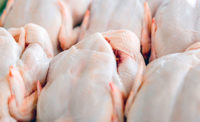An Israel-based producer of cultured poultry plans a U.S. production site to begin supplying foodservice customers.
SuperMeat has plans to go live with a plant in the United States in mid-2023, SuperMeat CEO Ido Savir said.
“We’re looking for that to be targeted at foodservice first, and gradually we would also roll out into retail,” Savir said.
Savir said SuperMeat’s aim is not to address the end consumer but meat companies and food companies that are looking for a new source of protein for their products.
“We’re actually a b-to-b player,” he said. “We see ourselves as part of the meat industry.”
SuperMeat makes meat production an industrial process, offering a new platform for producing meat in a way that’s conscious of land and water use, he said.
Building on his more than 20 years in the tech and biotech sectors, in the past five years Savir launched and grew SuperMeat from lab-scale culturing of cells to large-scale meat production and commercialization.
“In the past five or six years, I stumbled upon the concept of cellular agriculture and cultivated meat, and it really intrigued me as a tech to see how you could leverage technology to create a better, or very efficient, manufacturing system,” Savir said.
SuperMeat’s cultured poultry is aimed not just at vegetarians and vegans but also at people who love meat and are either interested in trying something new or are conscious of health and environmental impacts, Savir said.
“I think it goes through every demographic, however we do see that younger people are much more open to this,” he said.
Nearly one-third of consumers (29%) say they are open to trying cultivated meat.
SuperMeat makes its cultured poultry using a process Savir said is similar to fermentation and does not involve genetic modification.
To make SuperMeat’s cultured poultry, cells are taken from a chicken once to form what SuperMeat calls “the seed,” which contains cells that mature into muscle, fat and other meat-comprising tissues when placed in a meat fermenter, where warmth, oxygen and a liquid nutrient broth double meat tissue mass every couple of hours until it is ready to be prepped, cooked or processed into any meat application.
“It’s the same tissue, it’s the same meat,” Savir said.
“Biologically it’s the same,” he said. “If you look under the microscope, it’s the same cells.”
Savir said SuperMeat is a new way of looking at meat manufacturing because it’s no longer a serial process but an exponential process.
“It takes between two to four weeks depending on the scale you are aiming to produce until you actually reach the mass,” he said, “but once you reach that mass you can harvest the meat essentially every day.”
He said in the case of the poultry cells, they multiply in less than 24 hours, which means that essentially you can harvest half your flock and come back the next day and find it again.
“You could compare that to having 100,000 chickens one day, slaughtering/harvesting half of them, coming back the next day and again you would have 100,000 chickens just because of the inherent essence of how cells grow, which is they multiply,” Savir said.
SuperMeat’s location-independent production process is unaffected by external factors like weather and other environmental conditions while eliminating possible contamination points such as slaughter.
SuperMeat says its cultivated chicken production process uses less water, resources and energy, with the entire manufacturing process taking place in a closed and controlled system that ensures product quality and characteristics remain consistent from batch to batch.

.png?height=96&t=1647275041&width=96)



Report Abusive Comment